The mystery of the origin of Colombian coffee-you can't miss the secret trip to the coffee garden
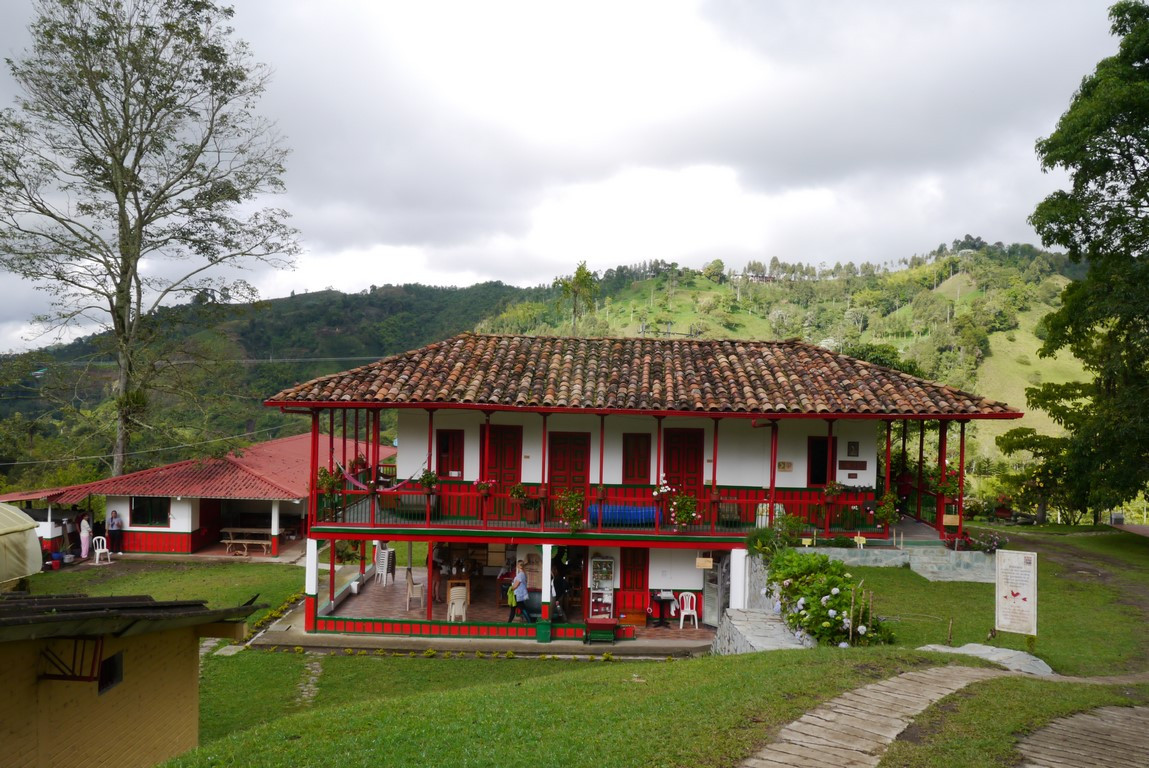
For professional baristas, please follow the coffee workshop (Wechat official account cafe_style)
We, who like coffee very much, have not officially joined the coffee tour until now, and for the first time we have chosen Colombia, which is the third largest coffee producer in the world. At nine o'clock in the morning, Finca el Ocaso, the most famous coffee farm in the central town of Salento, registered for the first English guided tour on time, along with several Germans and a Dutchman.
The top three coffee producing countries in the world are Brazil, Vietnam and Colombia, with three varieties, Arabica Arabica (accounting for about 70 per cent of world production), Robsta Robusta and Liberia Liberica. Colombia grows Arabica, which can only grow at a fixed altitude, just as the coffee zone in central Colombia provides the most suitable environment.
The guide gave each of us a basket tied to our waist and asked us to enter the coffee growing area within 5 minutes to harvest as many ripe fruits as possible. The fruits of most coffee trees are still unripe green, so we have to make some efforts to search for red ripe fruits, while better quality yellow fruits are fewer and harder to find. in the end, we only found the red ones, and only a few yellow fruits were harvested on the hint of the tour guide.
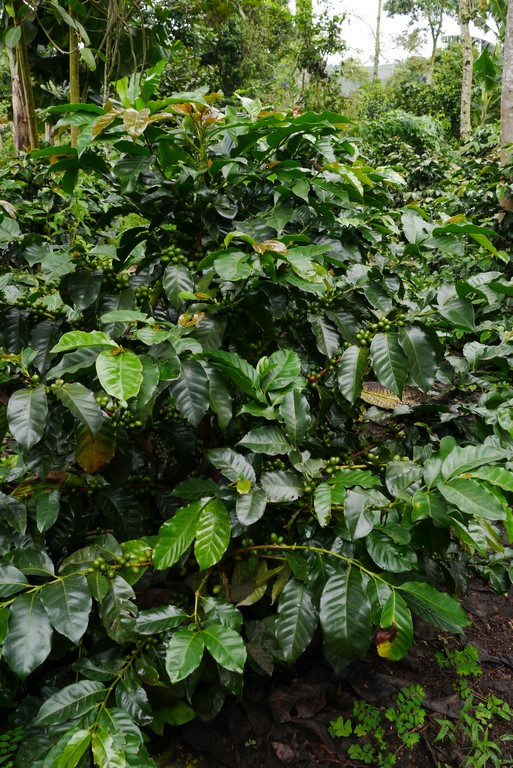
Arabica coffee tree
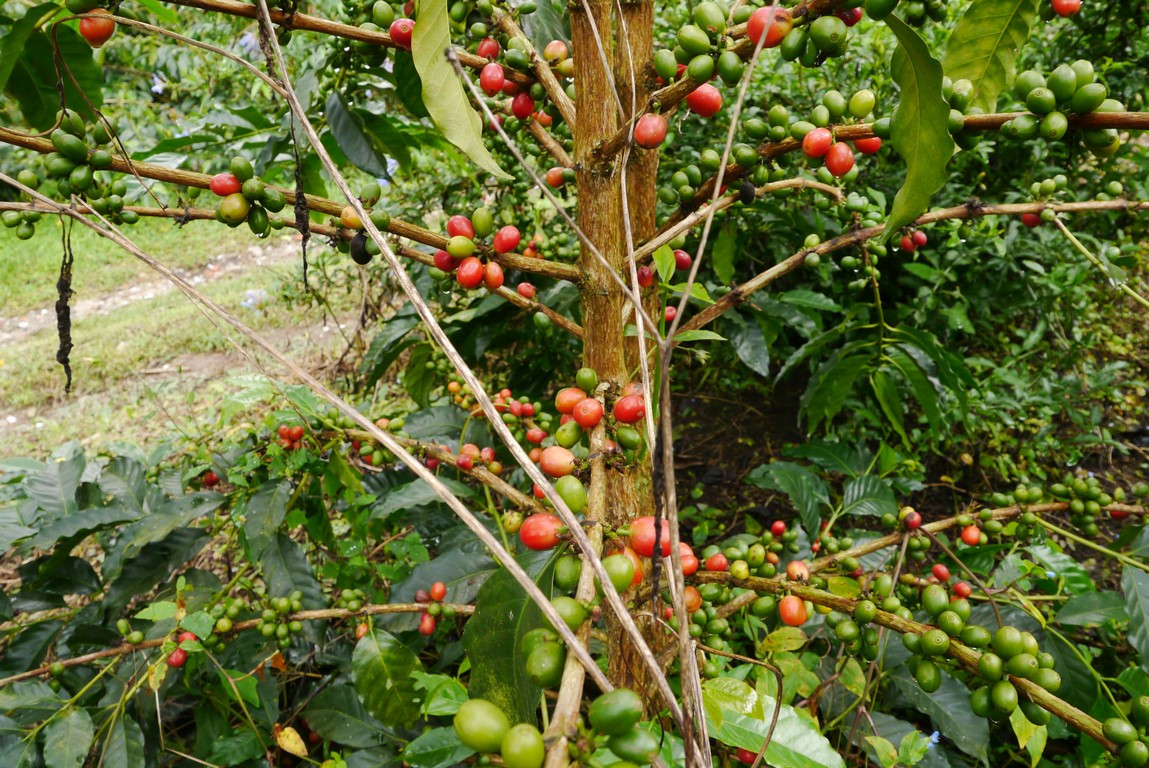
Red and green fruit, red is ripe and can be harvested
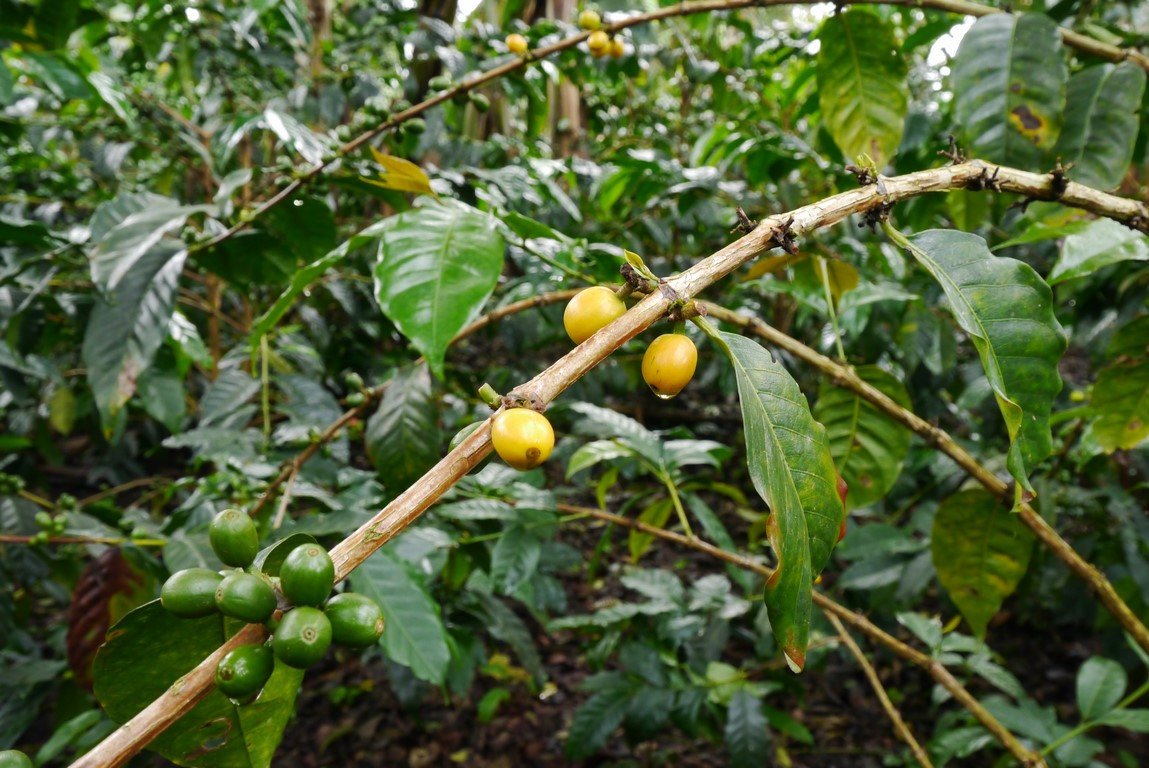
Precious yellow fruit
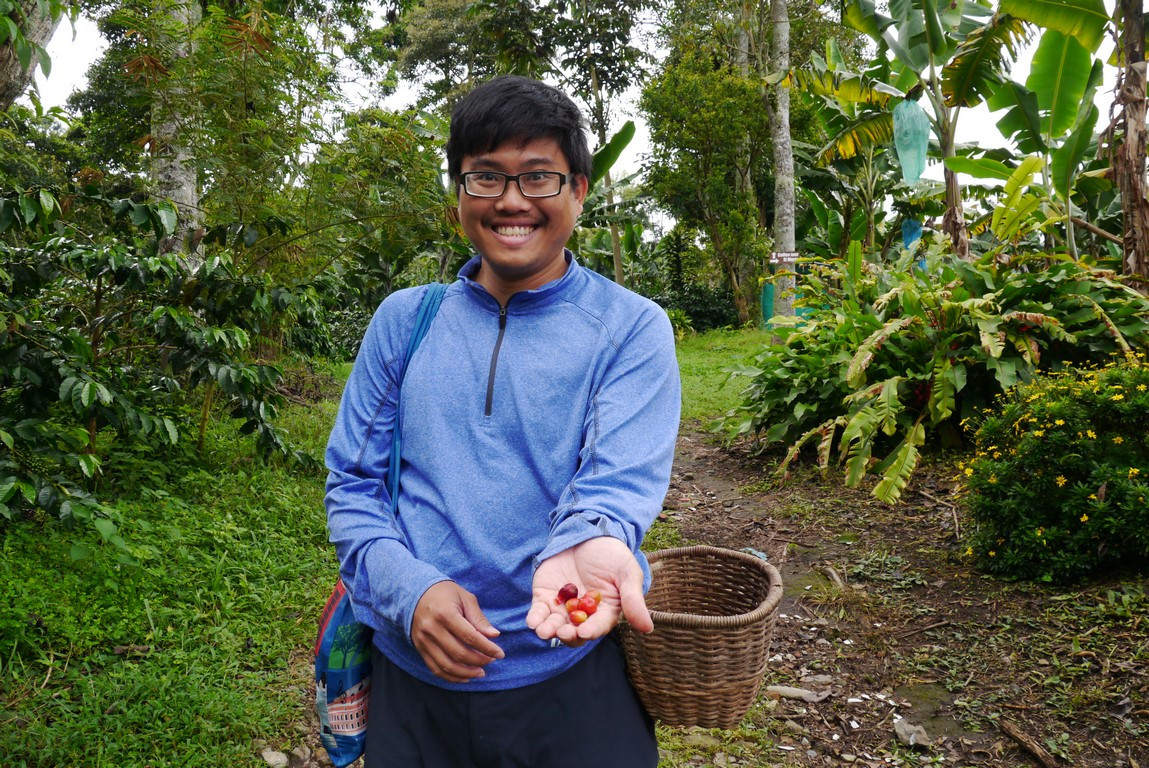
Harvest King Mr Smile
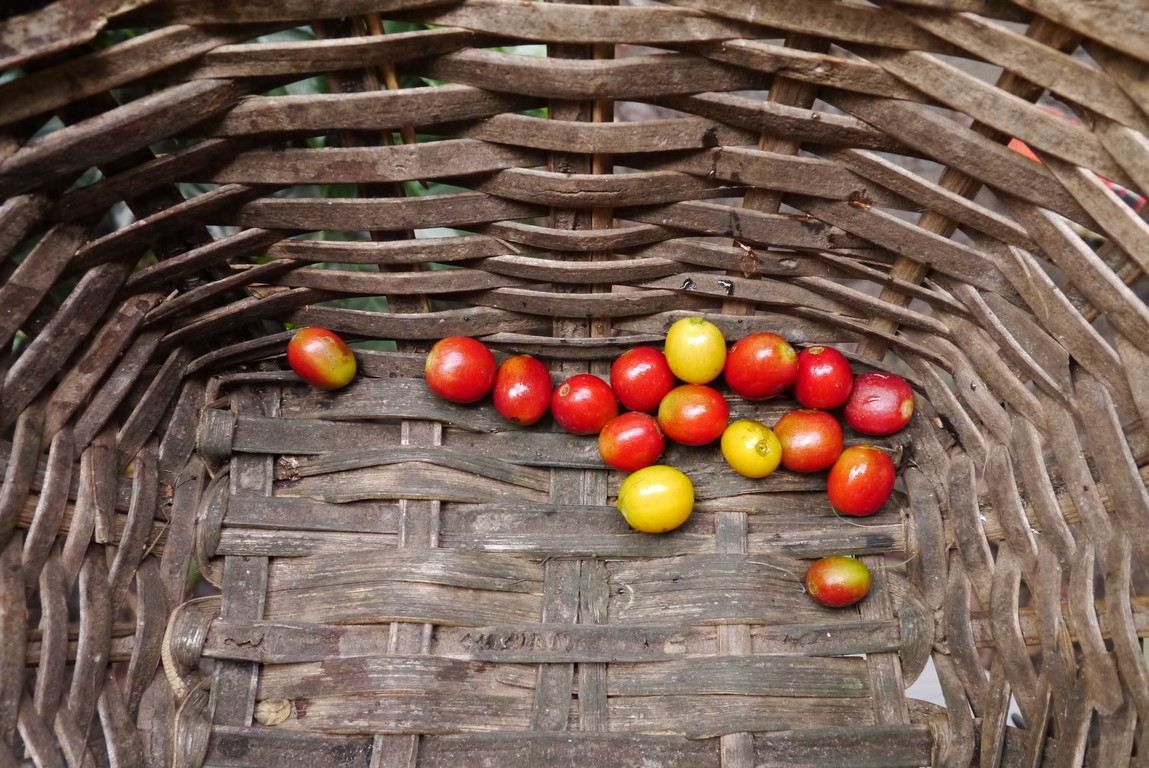
My tour guide said he wouldn't hire me, XD.
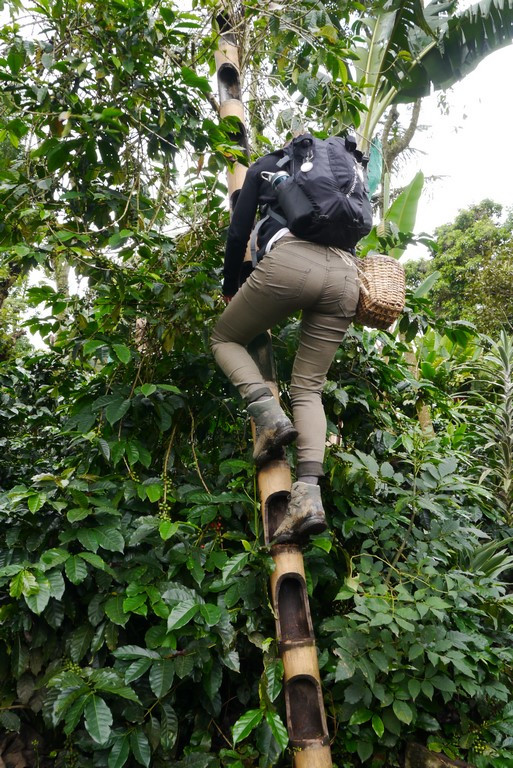
Occasionally a few taller varieties can only be harvested by ladders.
The guide asked us to choose the most beautiful fruit in our basket, squeeze it and suck its juice from the hole, but it was unexpectedly sweet! Then pluck away the fruit and take out the 2 seeds inside, and finally see the appearance of the coffee beans! I smelled it, and sure enough, there was no familiar smell of coffee before baking. Everyone took one of the seeds and planted them in the soil. I hope it can grow into a tree smoothly in 3-5 years.
When we arrived at the weighing area to face the cruel reality, several of us collected a total of 1 kilogram of fruit and could get a salary of about NT $8-10. In the mature season, anyone can collect it and pay it according to the weight of the harvest. A good collector can harvest 100 kilograms a day, which is amazing! Then the tour guide put one kilogram of our results into a peeling machine, and the flesh can be separated automatically by rotating the roller manually.
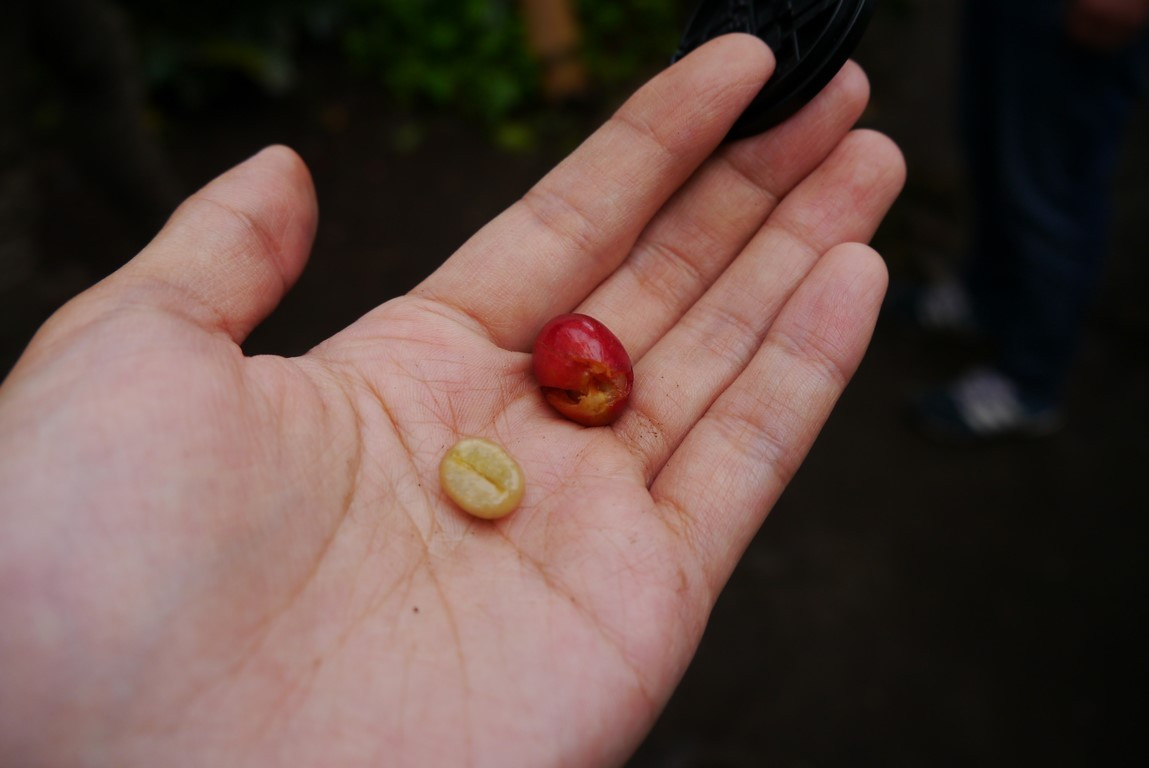
Fresh coffee beans plucked away
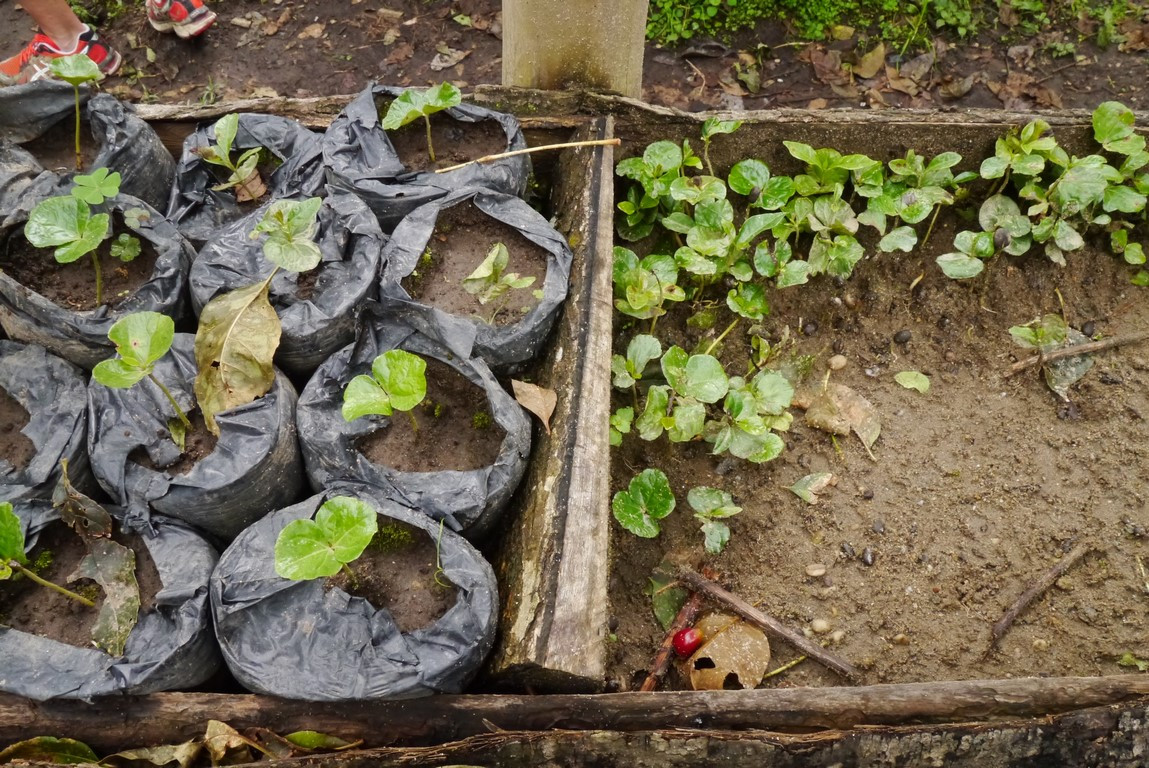
Plant the seeds of hope
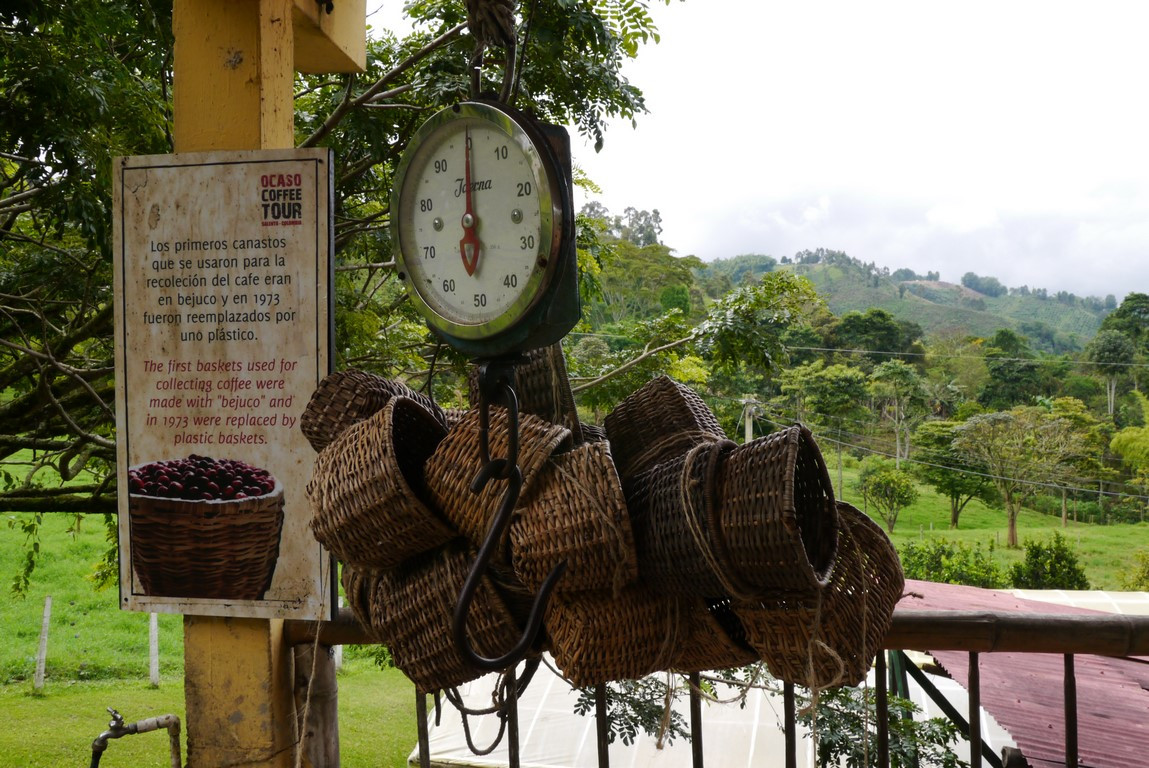
Weighing time!
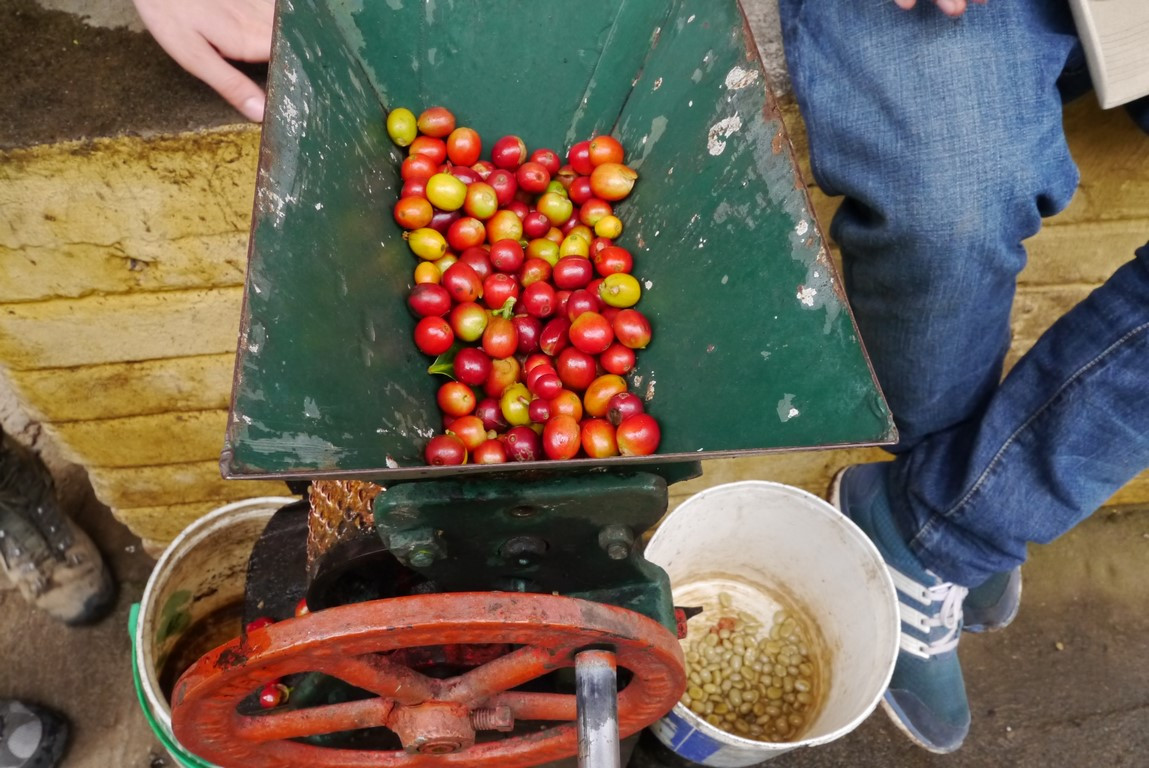
The coffee seeds are separated into the bucket on the right.
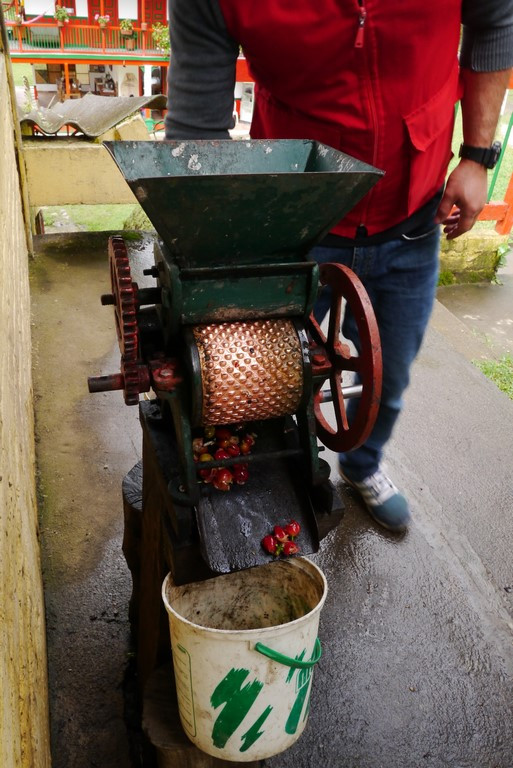
The unwanted skin of the fruit is separated into another bucket.
After peeling, coffee beans should be soaked in water first. if the coffee beans floating on the surface may be bitten by insects or of poor quality, these coffee beans will not be discarded, but will be collected into second-class coffee beans and left in Colombia for local people to drink. All good coffee beans will be exported abroad. It's a bit sad not to be able to drink homemade high-quality coffee, but it seems to be the norm in many developing countries in order to sell it at a good price.
Then the coffee beans must be dried and can be dried in an oven or in a greenhouse dried by the sun. The real coffee beans will have to be peeled off after drying. Because the estate does not have its own machine, the beans will be sent to the nearby big city Armenia for second floor peeling and then get them back. The peeled coffee can be recycled as fuel for the oven, while the coffee beans are returned to be screened by machines or manually screened out for export, and the rest will still be left as secondary coffee.
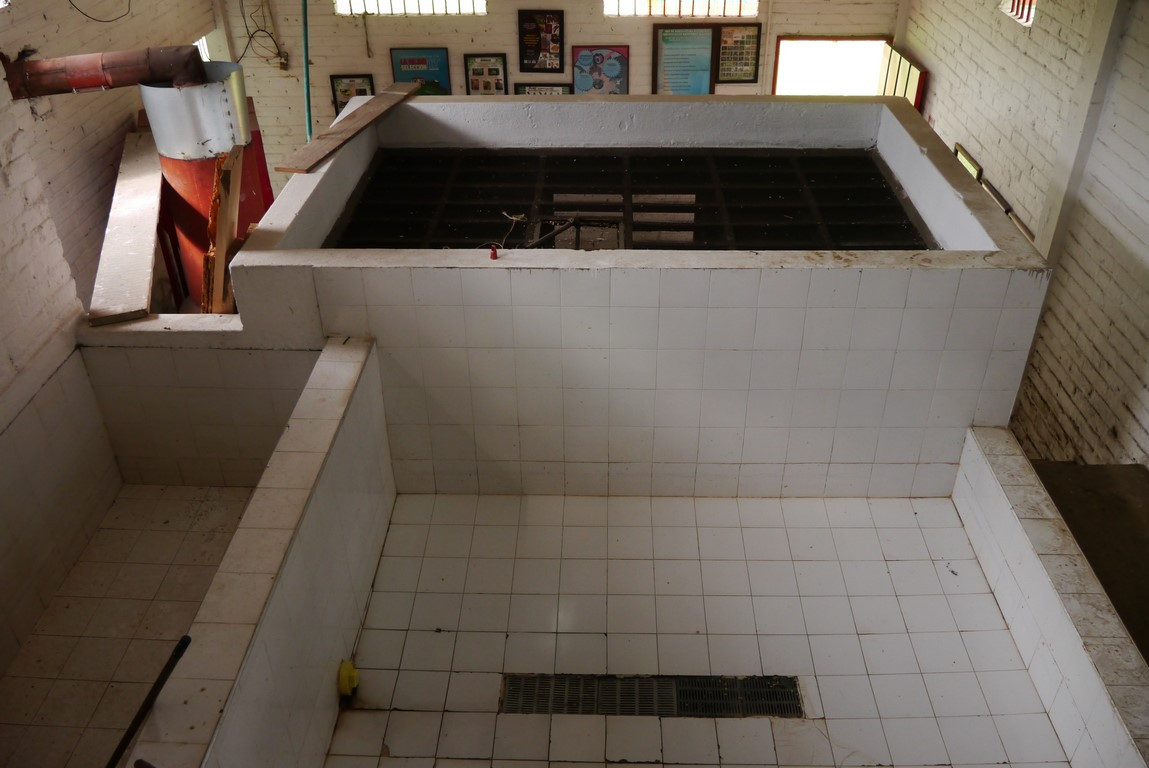
Coffee brewing water
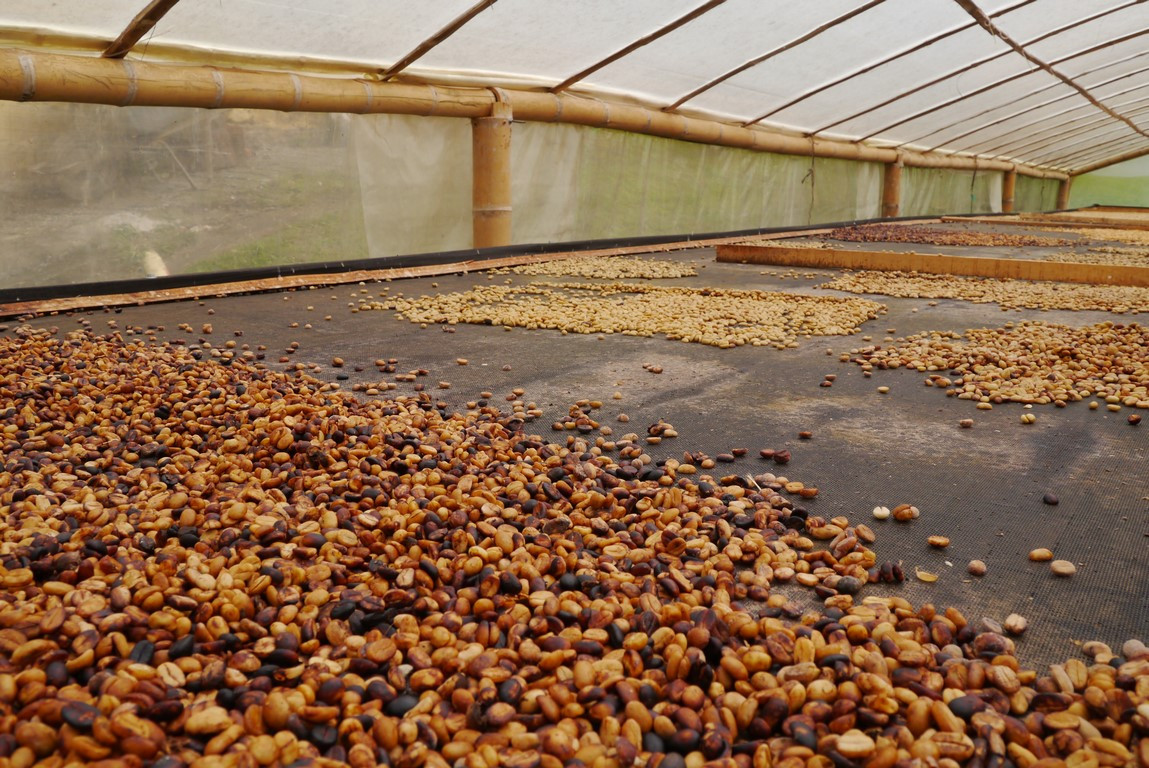
Drying by sunlight in a greenhouse
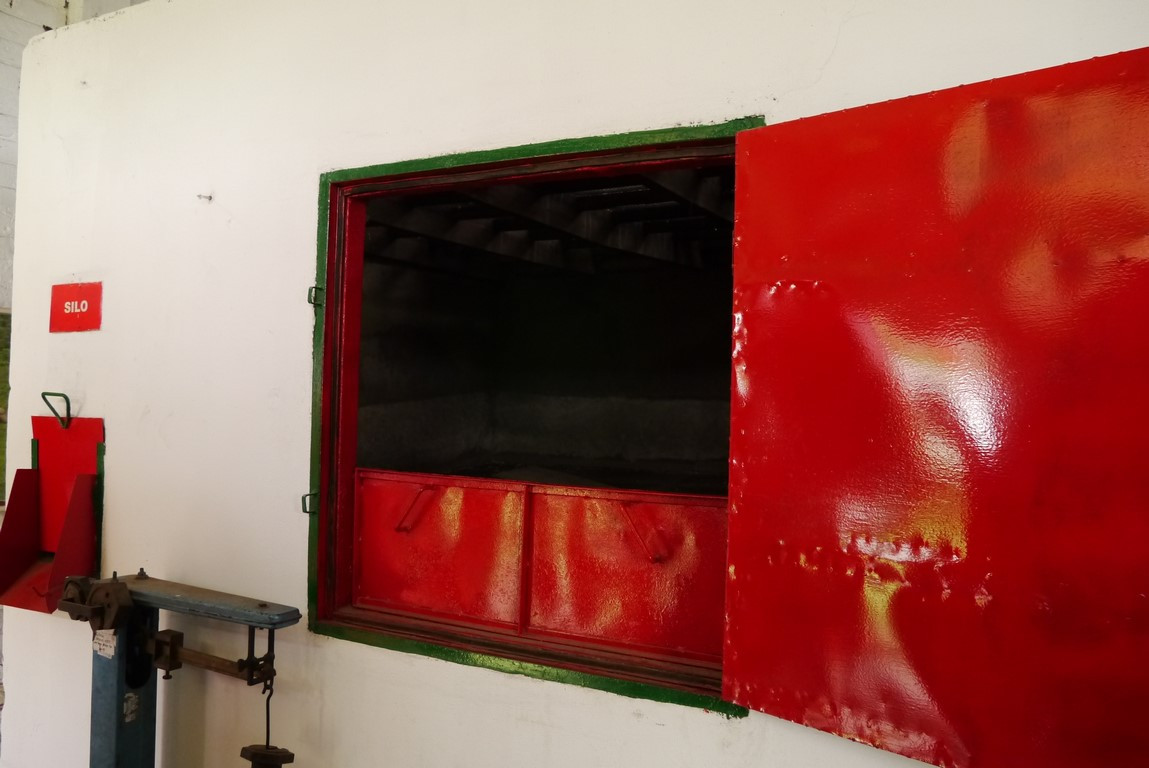
It can also be dried in an oven.
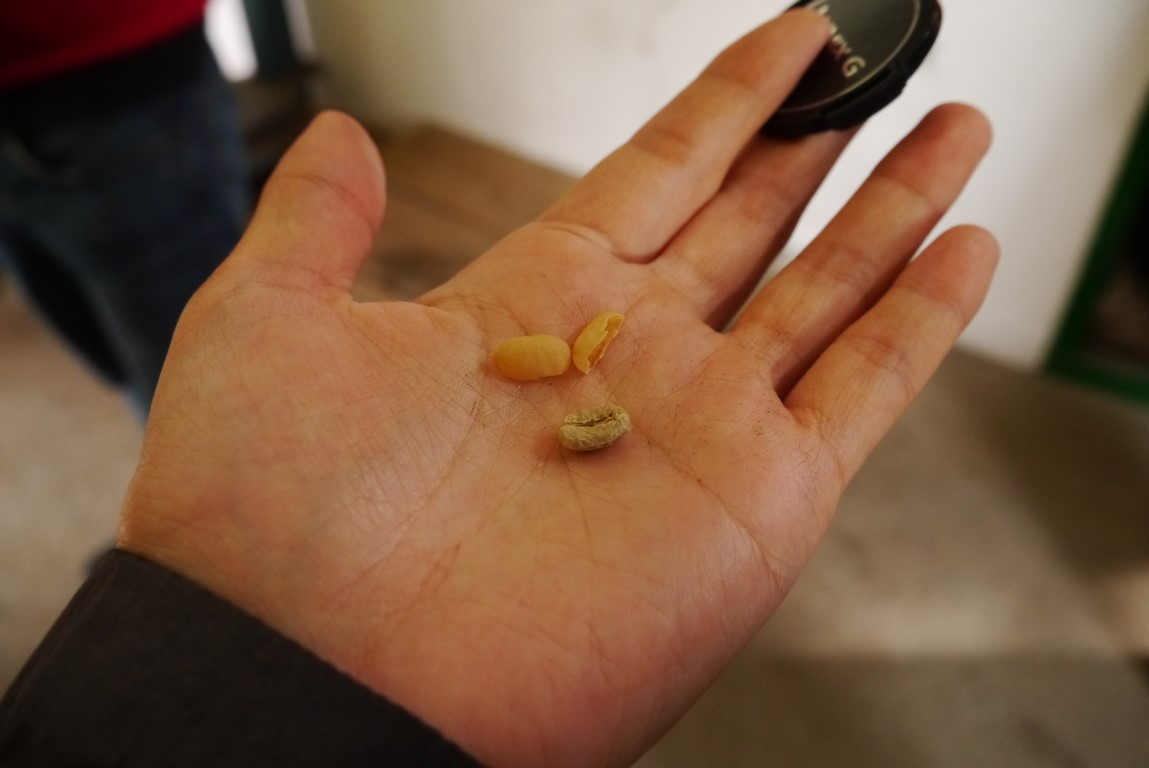
The second layer of peeling
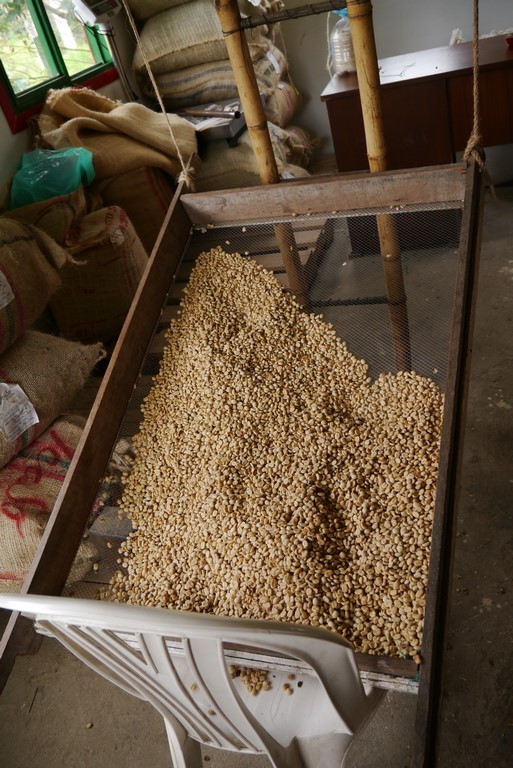
Manual screening
Sharp-eyed people may find that the final screened beans are still very light, not the dark coffee beans we bought on the market. In fact, these final stage beans will be directly exported after screening, and then the desired results will be baked by each country. Finally, in retrospect, the following photos from left to right are the fruit, the seeds peeled for the first time, the seeds peeled for the second time, and the roasted coffee beans.
Finally, it's time to try it! There is no roasting machine in the coffee farm, so they all roast the coffee beans directly on the stove. for tourists, they leave some of the best quality coffee beans for us to try and buy. The guide grinds the coffee beans into powder and then uses the traditional technology, white filter cloth and boiling water to make coffee. This way reminds me that kopi in Singapore uses a similar way. Sure enough, super coffee is delicious. I don't usually drink black coffee. I also feel the sour taste of coffee. My suitcase has exploded or bought 3 packs! A solid 1.5-hour tour gives us a preliminary understanding of coffee beans, and maybe next time we can learn how to make coffee!
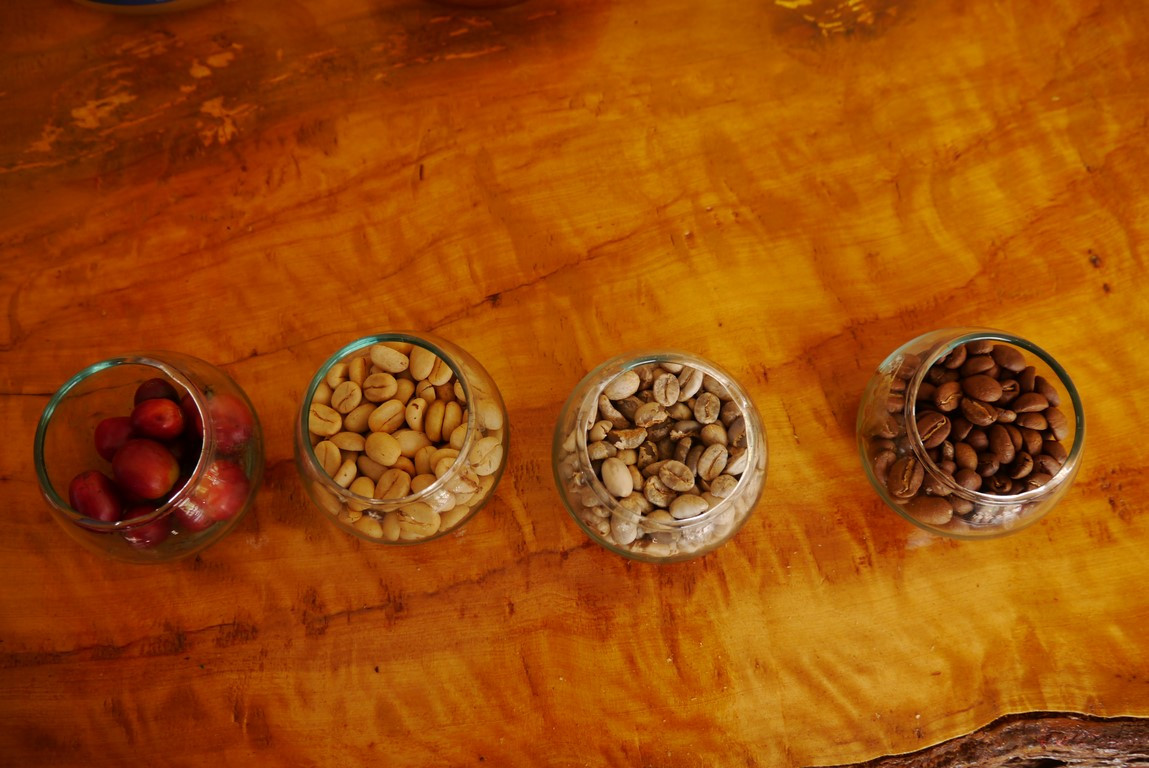
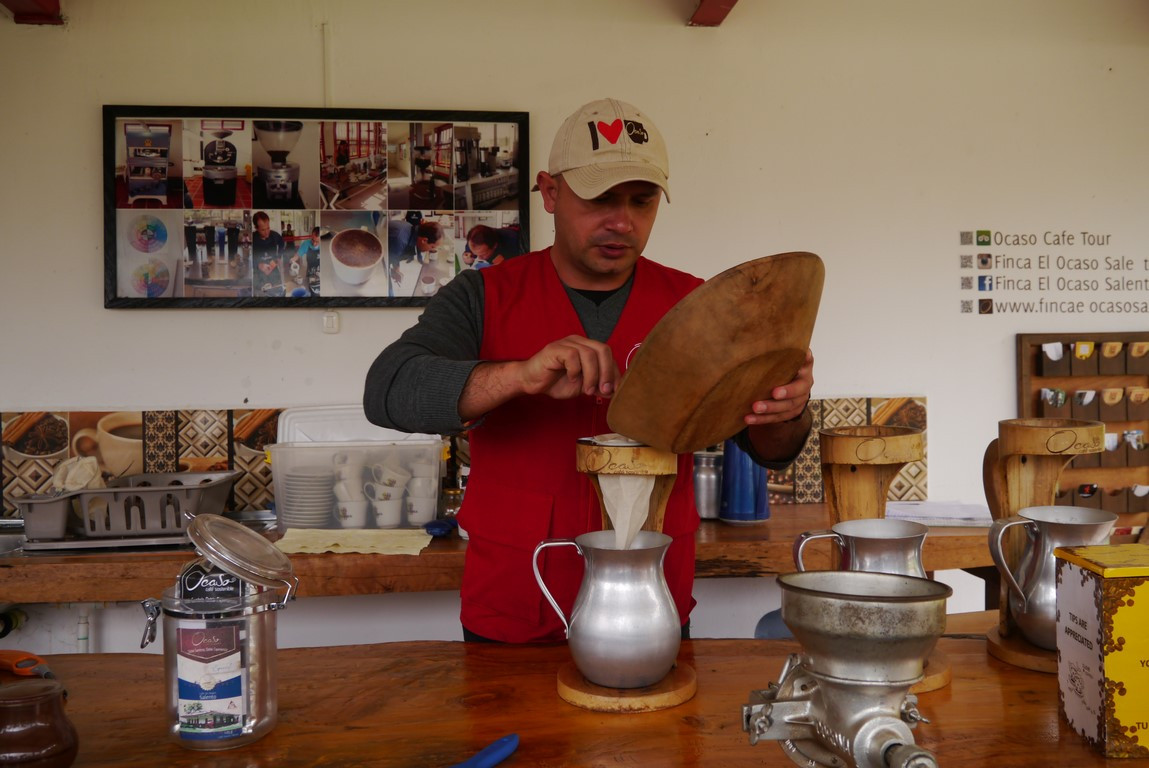
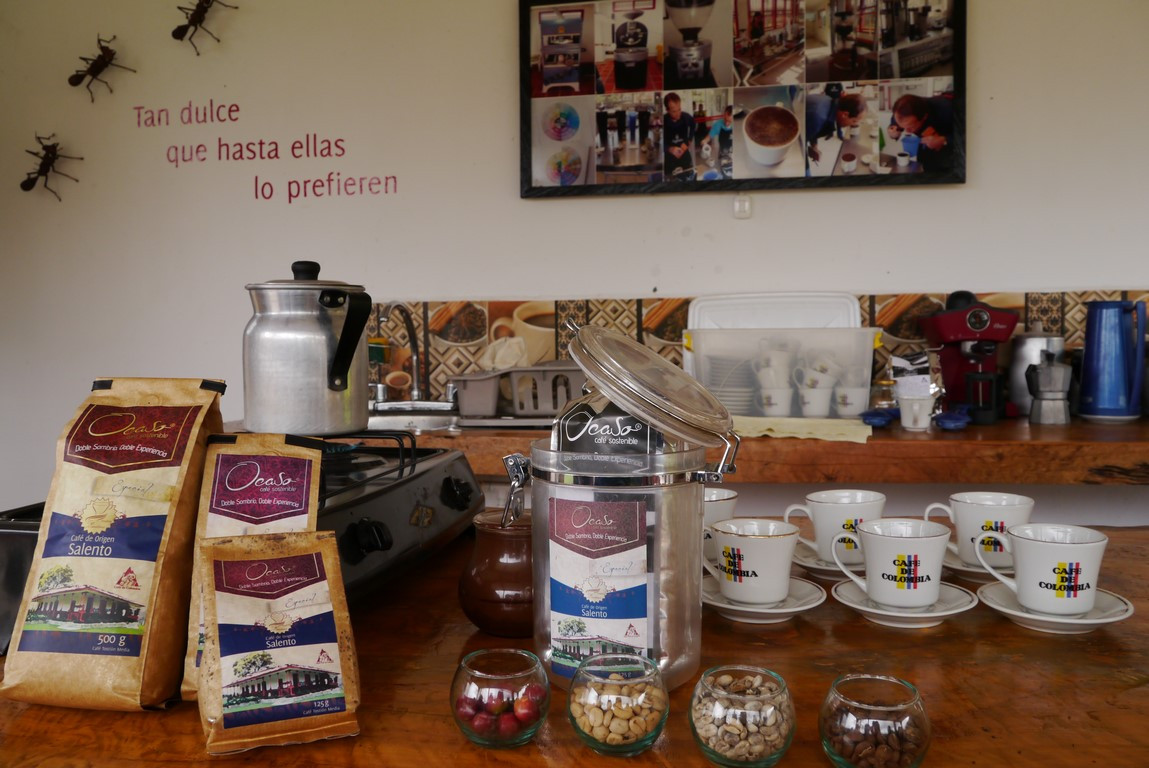
Practical tourism information
Finca El Ocaso Coffee Tour: Web site
1. We participated in the general General Tour: 9am, 11am, 12pm, 1pm, 2pm, 4pm English tour, one and a half hours, COP$ 10000 does not need to make an appointment, 10 minutes early.
two。 More professional Premium Tour: 2pm English guide, 3 hours, at least 4 people, appointment is required.
Traffic:
From Salento downtown square to the manor by Willy truck is COP$27,000, which is extremely expensive because few people can't share it. We have to take a truck because we don't have enough time. If we dare not have time to walk, it will take about an hour of dirt road. The return trip was supposed to be shared with others, but it was impossible to get a taxi. In the middle of the trip, a willy truck full of local people came. Everyone warmly welcomed us on board, helped us carry things and taught us where to grasp. It was so fun to go back to the city by chatting with a few people on the crossbar. It was so much fun to go back to the city with a bunch of people COP$ 2000 less than one person. Colombians are really enthusiastic!
Important Notice :
前街咖啡 FrontStreet Coffee has moved to new addredd:
FrontStreet Coffee Address: 315,Donghua East Road,GuangZhou
Tel:020 38364473
- Prev
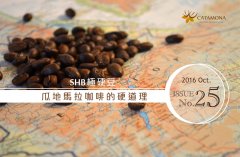
SHB extremely hard beans │ Guatemala Coffee
Communication of professional baristas please follow the coffee workshop (hard Truth Coffee of cafe_style Guatemalan Coffee, official account of Wechat), which is Guatemala's main export, because it is even rated as the best coffee in Central America by coffee gluttons because of its high quality, rich natural acidity and balanced mellowness, which makes other coffee producing areas in Central America pale in comparison. Guatemalan coffee has always been the beginning of coffee.
- Next
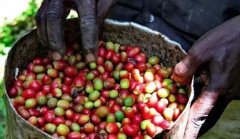
Rwanda Coffee Review Log: potato flaw
For professional baristas, please follow the judges of the coffee workshop (Wechat official account cafe_style). Sample 6 is confirmed to have potato flavor defects (Potato Defect,PD) and needs to be eliminated immediately. The voice of the main judge broke the tranquillity of the cup test venue. There have also been a lot of caffeine flaws that have been eliminated in the past three days. But the difference is that the people in the meeting room seem to like coffee No. 6 in particular.
Related
- Does Rose Summer choose Blue, Green or Red? Detailed explanation of Rose Summer Coffee plots and Classification in Panamanian Jade Manor
- What is the difference between the origin, producing area, processing plant, cooperative and manor of coffee beans?
- How fine does the espresso powder fit? how to grind the espresso?
- Sca coffee roasting degree color card coffee roasting degree 8 roasting color values what do you mean?
- The practice of lattes: how to make lattes at home
- Introduction to Indonesian Fine Coffee beans-- Java Coffee producing area of Indonesian Arabica Coffee
- How much will the flavor of light and medium roasted rose summer be expressed? What baking level is rose summer suitable for?
- Introduction to the characteristics of washing, sun-drying or wet-planing coffee commonly used in Mantenin, Indonesia
- Price characteristics of Arabica Coffee Bean Starbucks introduction to Manning Coffee Bean Taste producing area Variety Manor
- What is the authentic Yega flavor? What are the flavor characteristics of the really excellent Yejasuffi coffee beans?

